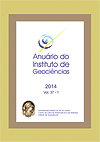Simplified Modeling of Tropospheric Ozone Formation Considering Alternative Fuels Using
DOI:
https://doi.org/10.11137/2014_2_151_160Keywords:
Tropospheric ozone, Alternative fuels, VOC.Abstract
Brazilian cities have been constantly exposed to air quality episodes of high ozone concentrations (O3). Known for not be emitted directly into the environment, O3 is a result of several chemical reactions of other pollutants emitted to atmosphere. The growth of vehicle fleet and government incentives for using alternative fuels like ethanol and Compressed Natural Gas (CNG) are changing the Brazilian Metropolitan Areas in terms of acetaldehyde and formaldehyde emissions, Volatile Organic Compounds (VOC's) present in the atmosphere and known to act on the kinetics of ozone. Driven by high concentrations of tropospheric ozone in urban/industry centers and its implications for environment and population health, the target of this work is understand the kinetics of ozone formation through the creation of a mathematical model in FORTRAN 90, describing a system of coupled ordinary differential equations able to represent a simplified mechanism of photochemical reactions in the Brazilian Metropolitan Area. Evaluating the concentration results of each pollutant were possible to observe the precursor's influence on tropospheric ozone formation, which seasons were more conducive to this one and which are the influences of weather conditions on formation of photochemical smog.Downloads
Download data is not yet available.
Downloads
Published
2017-02-15
How to Cite
Silva, L. A. F. da, Guerrero, J. S. P. and Pimentel, L. C. G. (2017) “Simplified Modeling of Tropospheric Ozone Formation Considering Alternative Fuels Using”, Anuário do Instituto de Geociências. Rio de Janeiro, BR, 37(2), pp. 151–160. doi: 10.11137/2014_2_151_160.
Issue
Section
Article
License
This journal is licensed under a Creative Commons — Attribution 4.0 International — CC BY 4.0, which permits use, distribution and reproduction in any medium, provided the original work is properly cited.















